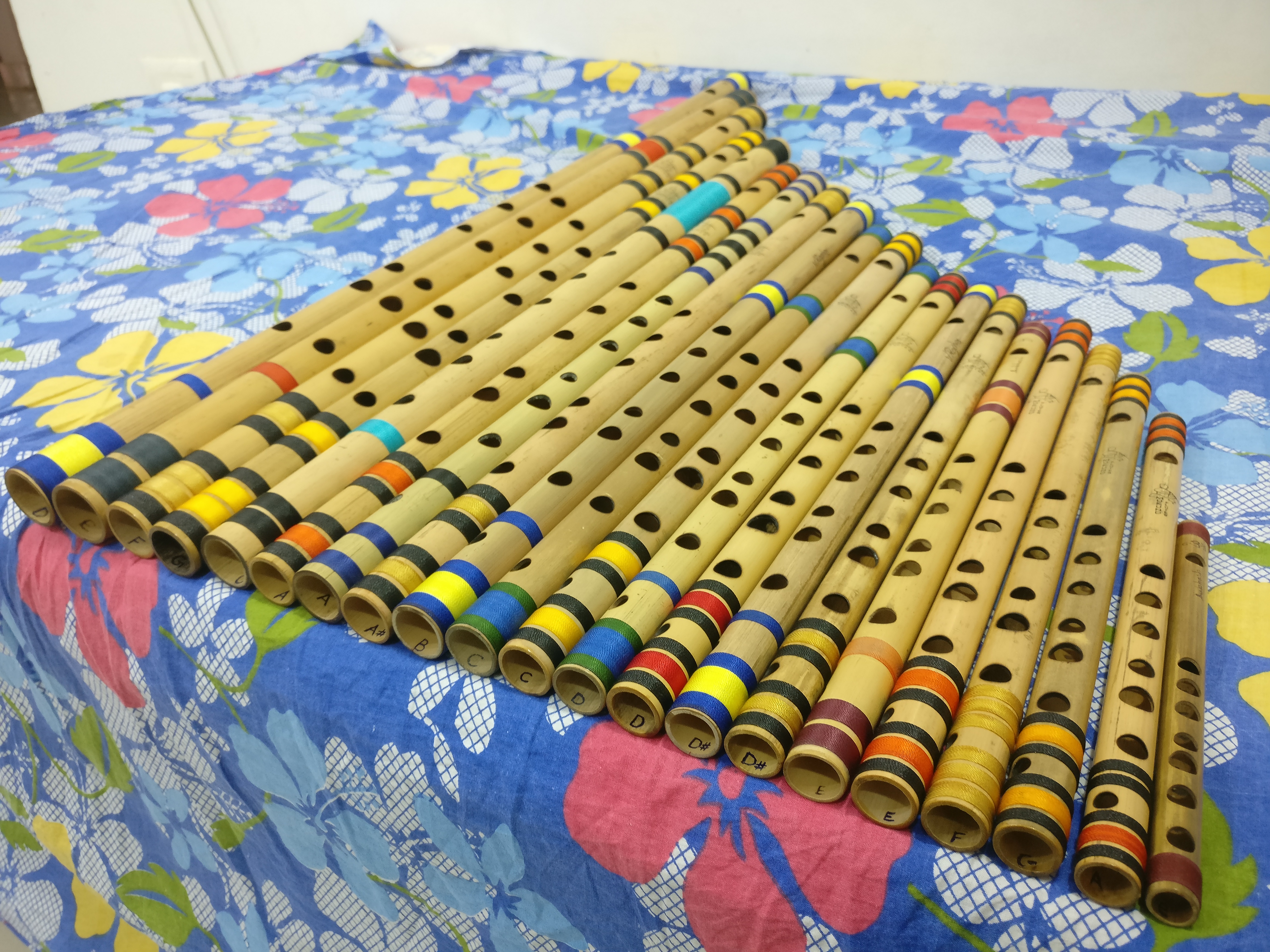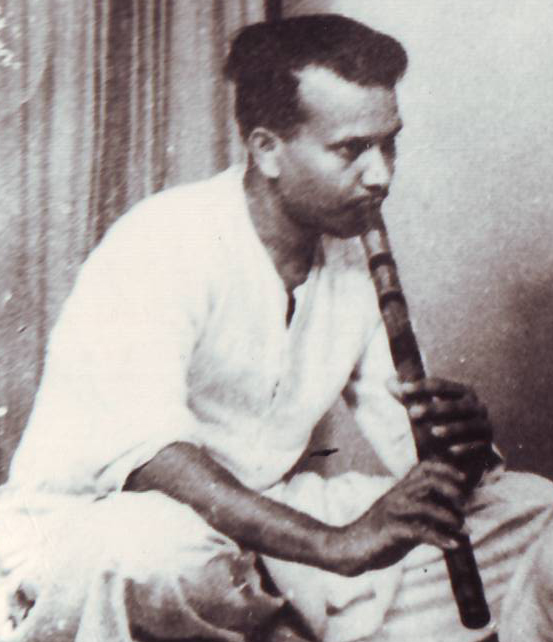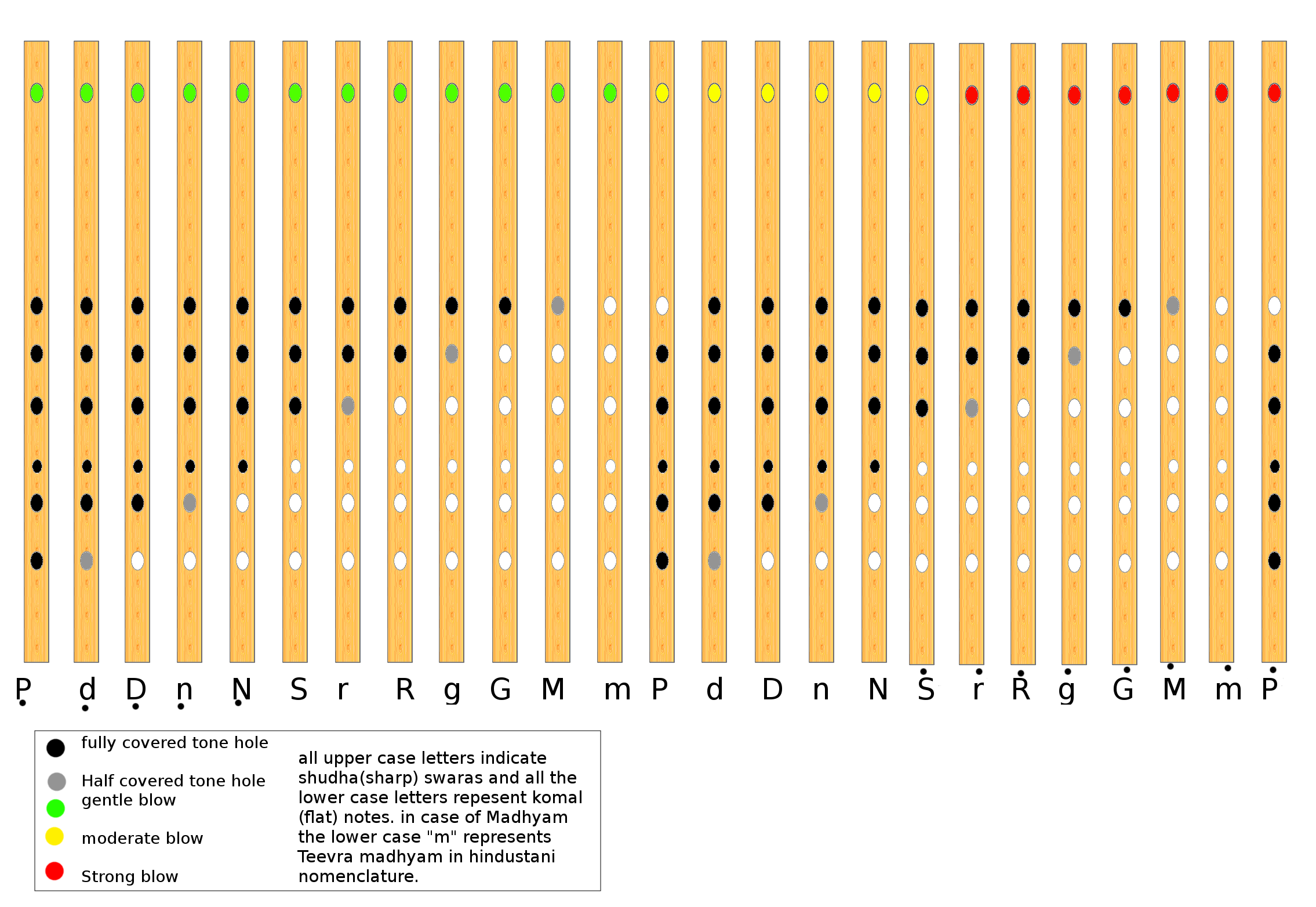|
Rishab Prasanna
Rishab Prasanna (, ) is an Indian flute or bansuri player. He was born in New Delhi. He is son of flute and shehnai player Rajendra Prasanna. Career Rishab Prasanna learned Indian classical music from his grandfather, Raghunath Prasanna, his father Rajendra Prasanna, and his uncles Ravi Shankar Prasanna and Rakesh Prasanna. Apart from his solo concert, Rishab Prasanna also plays with his brother, Rajesh Prasanna. He has worked on several projects with musicians in Europe Rishab has played at the WOMAD WOMAD ( ; World of Music, Arts and Dance) is an international arts festival. The central aim of WOMAD is to celebrate the world's many forms of music, arts and dance. History WOMAD was founded in 1980 by English rock musician Peter Gabriel, w ... Festivals in Australia, and New Zealand, the Festival international de la musique andalou, in Algeria, Les Allées Chantent in Isère (France), Musique et Patrimoine in Chinon (France), the Darbar Festival in London, Festiva ... [...More Info...] [...Related Items...] OR: [Wikipedia] [Google] [Baidu] |
Bansuri
A bansuri is an ancient side-blown bamboo flute originating from the Indian Subcontinent. It is an aerophone produced from bamboo and metal-like material, used in many Indian and Nepali Lok songs. A ''bansuri'' is traditionally made from a single hollow shaft of bamboo with seven finger holes. Some modern designs come in ivory, fiberglass and various metals. The six-hole instrument covers two and a half octaves of music. The ''bansuri'' is typically between in length, and the thickness of a human thumb. One end is closed, and few centimeters from the closed end is its blow hole. Longer ''bansuris'' feature deeper tones and lower pitches. The traditional design features no mechanical keys, and the musician creates the notes they want by covering and uncovering the various finger holes. The ''bansuri''-like flute is depicted in ancient Buddhist, Hindu and Jain temple paintings and reliefs, and is common in the iconography of the Hindu god Krishna. It is intimately linked to ... [...More Info...] [...Related Items...] OR: [Wikipedia] [Google] [Baidu] |
Hindustani Classical Music
Hindustani classical music is the Indian classical music, classical music of the Indian subcontinent's northern regions. It may also be called North Indian classical music or ''Uttar Bhartiya shastriya sangeet''. The term ''shastriya sangeet'' literally means classical music, and is also used to refer to Indian classical music in general. It is played on instruments like the veena, sitar and sarod. It diverged in the 12th century Common Era, CE from Carnatic music, the classical tradition of Southern India. While Carnatic music largely uses compositions written in Sanskrit, Telugu language, Telugu, Kannada, Tamil language, Tamil, Malayalam, Hindustani music largely uses compositions written in Hindi, Urdu, Braj Bhasha, Braj, Awadhi language, Avadhi, Bhojpuri language, Bhojpuri, Bengali language, Bengali, Rajasthani languages, Rajasthani, Marathi language, Marathi and Punjabi language, Punjabi. Knowledge of Hindustani classical music is taught through a network of classical musi ... [...More Info...] [...Related Items...] OR: [Wikipedia] [Google] [Baidu] |
Bansuri
A bansuri is an ancient side-blown bamboo flute originating from the Indian Subcontinent. It is an aerophone produced from bamboo and metal-like material, used in many Indian and Nepali Lok songs. A ''bansuri'' is traditionally made from a single hollow shaft of bamboo with seven finger holes. Some modern designs come in ivory, fiberglass and various metals. The six-hole instrument covers two and a half octaves of music. The ''bansuri'' is typically between in length, and the thickness of a human thumb. One end is closed, and few centimeters from the closed end is its blow hole. Longer ''bansuris'' feature deeper tones and lower pitches. The traditional design features no mechanical keys, and the musician creates the notes they want by covering and uncovering the various finger holes. The ''bansuri''-like flute is depicted in ancient Buddhist, Hindu and Jain temple paintings and reliefs, and is common in the iconography of the Hindu god Krishna. It is intimately linked to ... [...More Info...] [...Related Items...] OR: [Wikipedia] [Google] [Baidu] |
Rajendra Prasanna
Rajendra Prasanna (; born 15 April 1956) is an Indian classical flautist and shehnai (Indian oboe) player from Benares Gharana. Career Rajendra was born in Varanasi, Uttar Pradesh, India. He learnt music from his father Raghunath Prasanna and from his uncles Bholanath Prasanna and Vishnu Prasanna. His family moved to Delhi in the early seventies, and he later became the disciple of Hafeez Ahmed Khan and Sarfaraz Hussain Khan. He also took lessons from singer Mahadev Mishra of Benares Gharana. Performances He performed at the Edinburgh festival ( UK), Sydney Opera House, WOMAD Festival (Australia, New Zealand), World Music festival for the golden jubilee celebration for India's Independence held in America, Canada and Switzerland (U.N.O. Headquarters) in 1997, Concert for George in London (Ravi Shankar project), Opera de Lyon in France. Awards and honors * Top Grade Artist of All India Radio * Rajendra was the recipient of various awards and honors including the Uttar Pra ... [...More Info...] [...Related Items...] OR: [Wikipedia] [Google] [Baidu] |
Raghunath Prasanna
Pandit Raghunath Prasanna (1913 – 6 June 1999) was a distinguished Indian classical musician and is regarded as one of the pioneering figures of the Indian flute tradition. Renowned for his mastery of both the shehnai and the bansuri (bamboo flute), he brought a unique dimension to flute playing by incorporating shehnai techniques and the nuanced aesthetics of vocal music. His innovative style lent his performances a richly expressive and lyrical quality that set him apart in the world of Hindustani classical music. Personal life and family Raghunath was born in 1913 in Varanasi in the state of Uttar Pradesh. He was married to Saraswati Devi. They had seven children, Pandit Ravi Shankar Prasanna (Flute and Violin player), Pandit Rajendra Prasanna (flute and shehnai player), Pandit Rakesh Prasanna, Omkar Prasanna. Raghunath Ji's seven grandsons are in the field of music playing bansuri. Rajesh, Rishab, Ritesh, Rajat, Rohit, Rajeev and Rohan Prasanna are taking ahead the gr ... [...More Info...] [...Related Items...] OR: [Wikipedia] [Google] [Baidu] |
Rishab Prasanna- Rajesh Prasanna
Rishabhanatha (Devanagari: ऋषभनाथ), also Rishabhadeva (Devanagari: ऋषभदेव, ), Rishabha (Devanagari: ऋषभ, ) or Ikshvaku (Devanagari: इक्ष्वाकु, ''Ikṣvāku''), is the first (Supreme preacher) of Jainism. He was the first of twenty-four teachers in the present half-cycle of time in Jain cosmology and called a "ford maker" because his teachings helped one cross the sea of interminable rebirths and deaths. The legends depict him as having lived millions of years ago. He was the spiritual successor of Sampratti Bhagwan, the last Tirthankara of the previous time cycle. He is also known as Ādinātha (), as well as Adishvara (first Jina), Yugadideva (first deva of the yuga), Prathamarajeshwara (first God-king) and Nabheya (son of Nabhi). He is also known as Ikshvaku, establisher of the Ikshvaku dynasty. Along with Mahavira, Parshvanath, Neminath, and Shantinath, Rishabhanatha is one of the five Tirthankaras that attract the most dev ... [...More Info...] [...Related Items...] OR: [Wikipedia] [Google] [Baidu] |
WOMAD
WOMAD ( ; World of Music, Arts and Dance) is an international arts festival. The central aim of WOMAD is to celebrate the world's many forms of music, arts and dance. History WOMAD was founded in 1980 by English rock musician Peter Gabriel, with Thomas Brooman, Bob Hooton, Mark Kidel, Stephen Pritchard, Martin Elbourne and Jonathan Arthur. Original designers were Steve Byrne and Valerie Hawthorn. The first WOMAD festival was in Shepton Mallet, UK in 1982. The audience saw Peter Gabriel, Don Cherry, The Beat, Drummers of Burundi, Echo & The Bunnymen, Imrat Khan, Prince Nico Mbarga, Peter Hammill, Simple Minds, Suns of Arqa, The Chieftains and Ekome National Dance Company, founded by Barrington, Angie, Pauline and Lorna Anderson, the pioneering African arts company in the UK amongst others performing. Peter Gabriel's performance included a dynamic inclusion of the Ekome National Dance Company, fusing live African Drums on Gabriel's track " The Rhythm of the Heat". ... [...More Info...] [...Related Items...] OR: [Wikipedia] [Google] [Baidu] |
1985 Births
The year 1985 was designated as the International Youth Year by the United Nations. Events January * January 1 ** The Internet's Domain Name System is created. ** Greenland withdraws from the European Economic Community as a result of a new agreement on fishing rights. * January 7 – Japan Aerospace Exploration Agency launches ''Sakigake'', Japan's first interplanetary spacecraft and the first deep space probe to be launched by any country other than the United States space exploration programs, United States or the Soviet space program, Soviet Union. * January 15 – Tancredo Neves is Brazilian presidential election, 1985, elected president of Brazil by the National Congress of Brazil, Congress, ending the Military dictatorship in Brazil, 21-year military rule. * January 27 – The Economic Cooperation Organization, Economic Cooperation Organization (ECO) is formed, in Tehran. * January 28 – The charity single record "We Are the World" is recorded by USA ... [...More Info...] [...Related Items...] OR: [Wikipedia] [Google] [Baidu] |
Living People
Purpose: Because living persons may suffer personal harm from inappropriate information, we should watch their articles carefully. By adding an article to this category, it marks them with a notice about sources whenever someone tries to edit them, to remind them of WP:BLP (biographies of living persons) policy that these articles must maintain a neutral point of view, maintain factual accuracy, and be properly sourced. Recent changes to these articles are listed on Special:RecentChangesLinked/Living people. Organization: This category should not be sub-categorized. Entries are generally sorted by family name In many societies, a surname, family name, or last name is the mostly hereditary portion of one's personal name that indicates one's family. It is typically combined with a given name to form the full name of a person, although several give .... Maintenance: Individuals of advanced age (over 90), for whom there has been no new documentation in the last ten ... [...More Info...] [...Related Items...] OR: [Wikipedia] [Google] [Baidu] |
Indian Flautists
Indian or Indians may refer to: Associated with India * of or related to India ** Indian people ** Indian diaspora ** Languages of India ** Indian English, a dialect of the English language ** Indian cuisine Associated with indigenous peoples of the Americas * Indigenous peoples of the Americas ** First Nations in Canada ** Native Americans in the United States ** Indigenous peoples of the Caribbean ** Indigenous languages of the Americas Places * Indian, West Virginia, U.S. * The Indians, an archipelago of islets in the British Virgin Islands Arts and entertainment Film * ''Indian'' (film series), a Tamil-language film series ** ''Indian'' (1996 film) * ''Indian'' (2001 film), a Hindi-language film Music * Indians (musician), Danish singer Søren Løkke Juul * "The Indian", an unreleased song by Basshunter * "Indian" (song), by Sturm und Drang, 2007 * "Indians" (song), by Anthrax, 1987 * Indians, a song by Gojira from the 2003 album '' The Link'' Other uses i ... [...More Info...] [...Related Items...] OR: [Wikipedia] [Google] [Baidu] |
Bansuri Players
A bansuri is an ancient Transverse flute, side-blown bamboo flute originating from the South Asia, Indian Subcontinent. It is an aerophone produced from bamboo and metal-like material, used in many Indian and Nepali Lok songs. A ''bansuri'' is traditionally made from a single hollow shaft of bamboo with seven finger holes. Some modern designs come in ivory, fiberglass and various metals. The six-hole instrument covers two and a half octaves of music. The ''bansuri'' is typically between in length, and the thickness of a human thumb. One end is closed, and few centimeters from the closed end is its blow hole. Longer ''bansuris'' feature deeper tones and lower pitches. The traditional design features no mechanical keys, and the musician creates the notes they want by covering and uncovering the various finger holes. The ''bansuri''-like flute is depicted in ancient Buddhist, Hindu and Jain temple paintings and reliefs, and is common in the iconography of the Hindu god Krishna ... [...More Info...] [...Related Items...] OR: [Wikipedia] [Google] [Baidu] |







